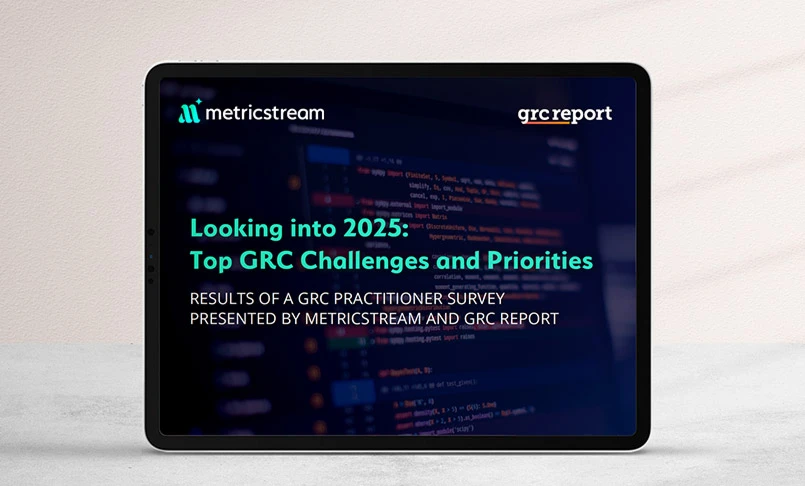Introduction
Operational risk, stemming from people, processes, systems, or external events, can significantly disrupt business continuity and financial performance. An effective operational risk assessment identifies vulnerabilities, quantifies their risks, and allows organizations to proactively allocate resources for mitigation. This guide outlines a full framework, from definitions to tools, for building a resilient risk culture.
Key Takeaways
- Understanding operational risk assessment is the first step in protecting assets, reputation, and continuity.
- A structured assessment involves risk identification, analysis, evaluation, and action planning.
- Organizations that regularly perform risk assessments are better equipped to prevent disruptions and comply with regulations.
- Incorporating practical tools—like templates, heatmaps, and software—boosts efficiency and alignment across teams.
What Is Operational Risk Assessment?
An operational risk assessment is a systematic evaluation of risks arising from internal processes, people, systems, or external factors (e.g., supply chain failures, natural disasters, or compliance breaches). Unlike credit or market risk, operational risk is pervasive—it can affect any function.
Operational risk assessment example:
- A bank might assess the risk of ATM system downtime, mapping the frequency of outages and customer impact to develop backup plans or vendor SLAs.
- A logistics firm might evaluate warehouse automation systems to identify risks related to mis-shelving, forklift accidents, or inventory reconciliation issues.
How to Perform an Operational Risk Assessment
The below 7 steps will help one effectively perform an operational risk assessment:
- Define Scope and Context: Establish business objectives, risk appetite, and the operational landscape (e.g., departments, systems, third parties).
- Identify Risks: Use process flow charts, interviews, historical loss data, and team workshops to list potential risks across domains (people, processes, tech, external).
- Analyze and Prioritize: Estimate likelihood (e.g., frequent, rare) and impact (e.g., $ impact, downtime minutes). Plot on a risk matrix or heatmap. A template can significantly speed up this stage by providing pre-set likelihood and impact scales.
- Evaluate Controls: Assess existing controls. Are there preventive, detective, or corrective procedures in place? What’s their effectiveness rating?
- Develop Risk Response Plans: Choose among avoid, mitigate, transfer, or accept. Devise detailed action plans: Task owners, resources, timelines, metrics.
- Monitor and Report: Use dashboards and track Key Risk Indicators (KRIs). Conduct periodic reviews and control testing. Update the assessment as systems, processes, or regulations change.
- Communicate and Improve: Share outcomes with leadership, audit teams, and staff. Gather feedback, track lessons learned, and refine the process, completing the risk management cycle.
Importance of Operational Risk Assessment
Here are some key reasons why operational risk assessment is essential for modern enterprises:
- Prevents Operational Failures: Early risk identification—such as gaps in vendor onboarding—can avoid service interruptions, reputational issues, and regulatory penalties.
- Supports Compliance: Regulators (e.g., Basel III for banks, FDA for pharma) require ongoing risk validation. A formal assessment demonstrates control and preparedness.
- Enhances Decision-Making: Risk insights guide resource allocation and strategic investments—e.g., deciding between investing in training vs. automation.
- Protects Reputation: Well-documented risk practices demonstrate reliability to investors, auditors, and customers, building confidence and resilience.
- Saves Costs: According to a 2023 survey by ABB, unplanned downtime costs organizations in industrial sectors an average of $125,000 per hour, with outages during working shifts potentially reaching $1 million per day. Conducting proactive operational and cyber risk assessments can help prevent such disruptions and protect both continuity and revenue.
Key Components of an Effective Operational Risk Assessment
To build a robust risk assessment process, these foundational components are critical:
Risk Taxonomy
- Establishing a consistent risk classification system is foundational. A strong taxonomy helps categorize risks into areas like:
- Internal fraud (e.g., employee embezzlement)
- External fraud (e.g., phishing scams)
- IT/system failures (e.g., downtime due to server crash)
- Process errors (e.g., invoicing mistakes)
- Legal or compliance breaches
- Third-party or vendor discontinuities
- This common language supports better reporting, analysis, and benchmarking across the organization.
Risk and Control Register
- A centralized document or system capturing:
- Risk ID and description
- Likelihood and impact scores
- Control measures in place (and their effectiveness)
- Assigned owner(s)
- Status updates
- It enables traceability and accountability across risk types and departments.
Risk Scoring Methodology
- Use numeric or color-coded scales (e.g., 1–5 or low-medium-high) for:
- Likelihood: How often the event may occur
- Impact: The financial, operational, or reputational cost
- Consider custom calibrations (e.g., loss amounts, downtime hours) based on organizational risk appetite.
Heatmaps
- These visual tools plot risks across a two-dimensional grid:
- Y-axis: Likelihood
- X-axis: Impact
- They help leadership quickly identify “high-priority” risks in the top-right quadrant and assess the risk landscape at a glance.
Key Risk Indicators (KRIs) and Thresholds
- Define specific, quantifiable metrics that monitor risk triggers.Examples include:
- Number of failed login attempts (cyber risk)
- Vendor SLA violations (third-party risk)
- Downtime hours per quarter (IT risk)
- Assign thresholds for each KRI. Breaching a threshold should trigger escalation or mitigation steps.
Action Plans
- For each high-priority risk, develop a concrete plan that includes:
- Mitigation or remediation steps
- Responsible owner(s)
- Budget or resources required
- Target timeline
- Tracking metrics
- These ensure risks are not just documented but actively managed.
Governance Structure
- Define clear roles and escalation procedures across levels:
- Frontline Operations: First line of defense (risk identification)
- Risk Management & Compliance: Second line (oversight & analysis)
- Internal Audit: Third line (independent assurance)
- Senior Leadership/Board: Strategic oversight, risk appetite setting
Audit Trail and Documentation
- Keep a formal record of:
- Risk workshops and interview notes
- Assessment decisions and justifications
- Version-controlled templates
- Periodic review logs
- Essential for audits, regulatory inspections, and accountability.
Challenges in Operational Risk Assessment
Despite its importance, conducting an effective operational risk assessment is not without its hurdles. Below are some of the most common and critical challenges organizations face, along with added context and examples to better illustrate their impact:
Data Gaps
- What it means: Incomplete, outdated, or inaccurate data hampers the ability to analyze historical incidents, detect risk trends, or forecast future threats.
- Why it matters: Without access to reliable data, risk assessments become subjective and inconsistent.
- Example: A bank lacking detailed incident logs for failed transactions may overlook recurring IT failures that could escalate into a systemic outage.
- Impact: Risk exposure gets underestimated, and mitigation efforts may target the wrong priorities.
Quantification Difficulties
- What it means: Operational risks often involve intangible outcomes—like reputational damage, regulatory penalties, or process failures—that don’t lend themselves to simple financial modeling.
- Why it matters: Without quantifiable metrics, it’s difficult to rank risks or allocate resources effectively.
- Example: Comparing the risk of a supply chain disruption with a potential lawsuit requires subjective judgment if neither has been historically quantified.
- Impact: Critical risks may be undervalued or deprioritized, leaving the organization vulnerable to preventable losses.
Siloed Participation
- What it means: Risk-related insights are scattered across departments—finance, IT, operations, compliance—and not shared systematically.
- Why it matters: Without cross-functional collaboration, organizations fail to see the full picture of interconnected risks.
- Example: An IT team may be aware of recurring cybersecurity threats, but if legal and compliance teams are not looped in, the organization may miss regulatory implications or contract liabilities.
- Impact: Assessments become narrow, missing dependencies and shared vulnerabilities that increase systemic risk.
Control Validation
- What it means: Documented controls often look effective on paper, but may not function properly in real-world conditions.
- Why it matters: An overreliance on untested or outdated controls creates a false sense of security.
- Example: An organization may list “dual authorization for vendor payments” as a control, but if employees regularly bypass this due to urgency, the control is effectively non-functional.
- Impact: When real incidents occur, controls fail to prevent or contain the damage as expected. 5.
Resource Constraints
- What it means: Limited staff, tools, or financial investment often mean operational risk assessments are rushed, infrequent, or incomplete.
- Why it matters: Risk management becomes reactive instead of strategic.
- Example: A mid-sized manufacturer may lack a dedicated risk team, resulting in assessments being handled by overburdened finance personnel without the necessary expertise.
- Impact: Critical threats go unaddressed, and minor issues may snowball into major disruptions due to neglect.
Complacency
- What it means: Once risks are identified and documented, many organizations treat the job as “done” and don’t revisit them until a crisis hits.
- Why it matters: Risk environments evolve—business models shift, regulations tighten, new technologies emerge—and static assessments become outdated fast.
- Example: A retail company may document e-commerce fraud as a medium-level risk based on data from 2020, but fail to update its assessment after a surge in mobile payment fraud in 2023.
- Impact: Outdated risk registers and stale controls increase the organization’s vulnerability and limit its response effectiveness.
Best Practices for Operational Risk Assessment
The following practices can help bring clarity, consistency, and confidence to operational risk evaluation:
- Start with Templates Use pre-built operational risk assessment templates tailored to your industry (e.g., banking, manufacturing) to streamline your process.
- Foster Cross-Functional Collaboration Involve teams from IT, HR, procurement, and operations. Risk is everyone’s business, and different functions hold valuable context.
- Automate Data Collection Integrate platforms like ServiceNow, Jira, or ERP systems to pull in logs, incidents, and other operational data that inform KRIs.
- Conduct Periodic Reviews Revisit risk assessments quarterly or during major changes (mergers, system upgrades, regulatory shifts). Risks evolve—your assessments should too.
- Perform Scenario Testing Run tabletop or simulated exercises. Example: What happens if your top cloud vendor goes offline for 48 hours?
- Tie Risk to Business Outcomes Show how a risk affects KPIs, customer SLAs, or regulatory fines. This increases buy-in from leadership and business units.
- Invest in Training and Awareness Educate staff on how to recognize risks and report early warnings. Make operational risk a part of company culture, not just compliance.
Operational Risk Assessment Tools
Below are some key tools commonly used to assess and manage operational risks across industries.
Basic Tools:
- Excel/Google Sheets templates
- Manual heatmap builders
- Simple risk registers for startups and SMBs
Governance, Risk & Compliance (GRC) Platforms:
- MetricStream, RSA Archer, ServiceNow GRC
- Enable centralized risk registers, automated workflows, audit trails, and real-time dashboards
Enterprise Risk Management (ERM) Tools:
- LogicGate, Riskonnect, Resolver
- Offer wider enterprise risk frameworks, scenario modeling, integrations with BI tools, and reporting for the board/C-suite
Specialized Tools:
- Third-party risk platforms (e.g., Prevalent, OneTrust)
- Incident management tools (e.g., ZenGRC, Freshservice)
- Workflow automation platforms (e.g., Zapier, Power Automate) to integrate alerts
Effective operational risk assessment protects organizations from costly disruptions by enabling strategic forethought and tactical preparedness. By understanding what operational risk assessment is, implementing a structured process, and leveraging tools and templates, businesses can transform risk from a hidden threat into a managed dimension of resilience, supporting both stability and sustainable growth.
How MetricStream Can Help:
With MetricStream’s AI-powered Connected GRC software, organizations have access to a robust IT and cybersecurity risk management program that bridges business goals with security priorities. Turn risk intelligence into action and accelerate your response with Operational Risk Management (ORM) product that lLeverages leading frameworks and best practices to identify, evaluate, and address internal, external, and third-party risks. Simplify risk identification, exposure modeling, and control effectiveness while gaining real-time insights through intuitive dashboards and advanced analytics, all while ensuring compliance with relevant regulatory standards. For more information, request a personalized demo.
Frequently Asked Questions (FAQ)
What is an operational risk assessment template?
A pre-formatted tool (often spreadsheet-based) that standardizes risk data entry, scoring, and reporting across departments.
Can banks use the same templates as other industries?
Banks require more rigorous templates—for example, with regulatory KRIs tied to Basel III—though the underlying framework remains similar.
What's an operational risk assessment example?
Identifying shipment delays due to vendor failures, scoring them based on frequency and customer impact, then setting up alternate sourcing to reduce exposure.
Operational risk, stemming from people, processes, systems, or external events, can significantly disrupt business continuity and financial performance. An effective operational risk assessment identifies vulnerabilities, quantifies their risks, and allows organizations to proactively allocate resources for mitigation. This guide outlines a full framework, from definitions to tools, for building a resilient risk culture.
- Understanding operational risk assessment is the first step in protecting assets, reputation, and continuity.
- A structured assessment involves risk identification, analysis, evaluation, and action planning.
- Organizations that regularly perform risk assessments are better equipped to prevent disruptions and comply with regulations.
- Incorporating practical tools—like templates, heatmaps, and software—boosts efficiency and alignment across teams.
An operational risk assessment is a systematic evaluation of risks arising from internal processes, people, systems, or external factors (e.g., supply chain failures, natural disasters, or compliance breaches). Unlike credit or market risk, operational risk is pervasive—it can affect any function.
Operational risk assessment example:
- A bank might assess the risk of ATM system downtime, mapping the frequency of outages and customer impact to develop backup plans or vendor SLAs.
- A logistics firm might evaluate warehouse automation systems to identify risks related to mis-shelving, forklift accidents, or inventory reconciliation issues.
The below 7 steps will help one effectively perform an operational risk assessment:
- Define Scope and Context: Establish business objectives, risk appetite, and the operational landscape (e.g., departments, systems, third parties).
- Identify Risks: Use process flow charts, interviews, historical loss data, and team workshops to list potential risks across domains (people, processes, tech, external).
- Analyze and Prioritize: Estimate likelihood (e.g., frequent, rare) and impact (e.g., $ impact, downtime minutes). Plot on a risk matrix or heatmap. A template can significantly speed up this stage by providing pre-set likelihood and impact scales.
- Evaluate Controls: Assess existing controls. Are there preventive, detective, or corrective procedures in place? What’s their effectiveness rating?
- Develop Risk Response Plans: Choose among avoid, mitigate, transfer, or accept. Devise detailed action plans: Task owners, resources, timelines, metrics.
- Monitor and Report: Use dashboards and track Key Risk Indicators (KRIs). Conduct periodic reviews and control testing. Update the assessment as systems, processes, or regulations change.
- Communicate and Improve: Share outcomes with leadership, audit teams, and staff. Gather feedback, track lessons learned, and refine the process, completing the risk management cycle.
Here are some key reasons why operational risk assessment is essential for modern enterprises:
- Prevents Operational Failures: Early risk identification—such as gaps in vendor onboarding—can avoid service interruptions, reputational issues, and regulatory penalties.
- Supports Compliance: Regulators (e.g., Basel III for banks, FDA for pharma) require ongoing risk validation. A formal assessment demonstrates control and preparedness.
- Enhances Decision-Making: Risk insights guide resource allocation and strategic investments—e.g., deciding between investing in training vs. automation.
- Protects Reputation: Well-documented risk practices demonstrate reliability to investors, auditors, and customers, building confidence and resilience.
- Saves Costs: According to a 2023 survey by ABB, unplanned downtime costs organizations in industrial sectors an average of $125,000 per hour, with outages during working shifts potentially reaching $1 million per day. Conducting proactive operational and cyber risk assessments can help prevent such disruptions and protect both continuity and revenue.
To build a robust risk assessment process, these foundational components are critical:
Risk Taxonomy
- Establishing a consistent risk classification system is foundational. A strong taxonomy helps categorize risks into areas like:
- Internal fraud (e.g., employee embezzlement)
- External fraud (e.g., phishing scams)
- IT/system failures (e.g., downtime due to server crash)
- Process errors (e.g., invoicing mistakes)
- Legal or compliance breaches
- Third-party or vendor discontinuities
- This common language supports better reporting, analysis, and benchmarking across the organization.
Risk and Control Register
- A centralized document or system capturing:
- Risk ID and description
- Likelihood and impact scores
- Control measures in place (and their effectiveness)
- Assigned owner(s)
- Status updates
- It enables traceability and accountability across risk types and departments.
Risk Scoring Methodology
- Use numeric or color-coded scales (e.g., 1–5 or low-medium-high) for:
- Likelihood: How often the event may occur
- Impact: The financial, operational, or reputational cost
- Consider custom calibrations (e.g., loss amounts, downtime hours) based on organizational risk appetite.
Heatmaps
- These visual tools plot risks across a two-dimensional grid:
- Y-axis: Likelihood
- X-axis: Impact
- They help leadership quickly identify “high-priority” risks in the top-right quadrant and assess the risk landscape at a glance.
Key Risk Indicators (KRIs) and Thresholds
- Define specific, quantifiable metrics that monitor risk triggers.Examples include:
- Number of failed login attempts (cyber risk)
- Vendor SLA violations (third-party risk)
- Downtime hours per quarter (IT risk)
- Assign thresholds for each KRI. Breaching a threshold should trigger escalation or mitigation steps.
Action Plans
- For each high-priority risk, develop a concrete plan that includes:
- Mitigation or remediation steps
- Responsible owner(s)
- Budget or resources required
- Target timeline
- Tracking metrics
- These ensure risks are not just documented but actively managed.
Governance Structure
- Define clear roles and escalation procedures across levels:
- Frontline Operations: First line of defense (risk identification)
- Risk Management & Compliance: Second line (oversight & analysis)
- Internal Audit: Third line (independent assurance)
- Senior Leadership/Board: Strategic oversight, risk appetite setting
Audit Trail and Documentation
- Keep a formal record of:
- Risk workshops and interview notes
- Assessment decisions and justifications
- Version-controlled templates
- Periodic review logs
- Essential for audits, regulatory inspections, and accountability.
Despite its importance, conducting an effective operational risk assessment is not without its hurdles. Below are some of the most common and critical challenges organizations face, along with added context and examples to better illustrate their impact:
Data Gaps
- What it means: Incomplete, outdated, or inaccurate data hampers the ability to analyze historical incidents, detect risk trends, or forecast future threats.
- Why it matters: Without access to reliable data, risk assessments become subjective and inconsistent.
- Example: A bank lacking detailed incident logs for failed transactions may overlook recurring IT failures that could escalate into a systemic outage.
- Impact: Risk exposure gets underestimated, and mitigation efforts may target the wrong priorities.
Quantification Difficulties
- What it means: Operational risks often involve intangible outcomes—like reputational damage, regulatory penalties, or process failures—that don’t lend themselves to simple financial modeling.
- Why it matters: Without quantifiable metrics, it’s difficult to rank risks or allocate resources effectively.
- Example: Comparing the risk of a supply chain disruption with a potential lawsuit requires subjective judgment if neither has been historically quantified.
- Impact: Critical risks may be undervalued or deprioritized, leaving the organization vulnerable to preventable losses.
Siloed Participation
- What it means: Risk-related insights are scattered across departments—finance, IT, operations, compliance—and not shared systematically.
- Why it matters: Without cross-functional collaboration, organizations fail to see the full picture of interconnected risks.
- Example: An IT team may be aware of recurring cybersecurity threats, but if legal and compliance teams are not looped in, the organization may miss regulatory implications or contract liabilities.
- Impact: Assessments become narrow, missing dependencies and shared vulnerabilities that increase systemic risk.
Control Validation
- What it means: Documented controls often look effective on paper, but may not function properly in real-world conditions.
- Why it matters: An overreliance on untested or outdated controls creates a false sense of security.
- Example: An organization may list “dual authorization for vendor payments” as a control, but if employees regularly bypass this due to urgency, the control is effectively non-functional.
- Impact: When real incidents occur, controls fail to prevent or contain the damage as expected. 5.
Resource Constraints
- What it means: Limited staff, tools, or financial investment often mean operational risk assessments are rushed, infrequent, or incomplete.
- Why it matters: Risk management becomes reactive instead of strategic.
- Example: A mid-sized manufacturer may lack a dedicated risk team, resulting in assessments being handled by overburdened finance personnel without the necessary expertise.
- Impact: Critical threats go unaddressed, and minor issues may snowball into major disruptions due to neglect.
Complacency
- What it means: Once risks are identified and documented, many organizations treat the job as “done” and don’t revisit them until a crisis hits.
- Why it matters: Risk environments evolve—business models shift, regulations tighten, new technologies emerge—and static assessments become outdated fast.
- Example: A retail company may document e-commerce fraud as a medium-level risk based on data from 2020, but fail to update its assessment after a surge in mobile payment fraud in 2023.
- Impact: Outdated risk registers and stale controls increase the organization’s vulnerability and limit its response effectiveness.
The following practices can help bring clarity, consistency, and confidence to operational risk evaluation:
- Start with Templates Use pre-built operational risk assessment templates tailored to your industry (e.g., banking, manufacturing) to streamline your process.
- Foster Cross-Functional Collaboration Involve teams from IT, HR, procurement, and operations. Risk is everyone’s business, and different functions hold valuable context.
- Automate Data Collection Integrate platforms like ServiceNow, Jira, or ERP systems to pull in logs, incidents, and other operational data that inform KRIs.
- Conduct Periodic Reviews Revisit risk assessments quarterly or during major changes (mergers, system upgrades, regulatory shifts). Risks evolve—your assessments should too.
- Perform Scenario Testing Run tabletop or simulated exercises. Example: What happens if your top cloud vendor goes offline for 48 hours?
- Tie Risk to Business Outcomes Show how a risk affects KPIs, customer SLAs, or regulatory fines. This increases buy-in from leadership and business units.
- Invest in Training and Awareness Educate staff on how to recognize risks and report early warnings. Make operational risk a part of company culture, not just compliance.
Below are some key tools commonly used to assess and manage operational risks across industries.
Basic Tools:
- Excel/Google Sheets templates
- Manual heatmap builders
- Simple risk registers for startups and SMBs
Governance, Risk & Compliance (GRC) Platforms:
- MetricStream, RSA Archer, ServiceNow GRC
- Enable centralized risk registers, automated workflows, audit trails, and real-time dashboards
Enterprise Risk Management (ERM) Tools:
- LogicGate, Riskonnect, Resolver
- Offer wider enterprise risk frameworks, scenario modeling, integrations with BI tools, and reporting for the board/C-suite
Specialized Tools:
- Third-party risk platforms (e.g., Prevalent, OneTrust)
- Incident management tools (e.g., ZenGRC, Freshservice)
- Workflow automation platforms (e.g., Zapier, Power Automate) to integrate alerts
Effective operational risk assessment protects organizations from costly disruptions by enabling strategic forethought and tactical preparedness. By understanding what operational risk assessment is, implementing a structured process, and leveraging tools and templates, businesses can transform risk from a hidden threat into a managed dimension of resilience, supporting both stability and sustainable growth.
With MetricStream’s AI-powered Connected GRC software, organizations have access to a robust IT and cybersecurity risk management program that bridges business goals with security priorities. Turn risk intelligence into action and accelerate your response with Operational Risk Management (ORM) product that lLeverages leading frameworks and best practices to identify, evaluate, and address internal, external, and third-party risks. Simplify risk identification, exposure modeling, and control effectiveness while gaining real-time insights through intuitive dashboards and advanced analytics, all while ensuring compliance with relevant regulatory standards. For more information, request a personalized demo.
What is an operational risk assessment template?
A pre-formatted tool (often spreadsheet-based) that standardizes risk data entry, scoring, and reporting across departments.
Can banks use the same templates as other industries?
Banks require more rigorous templates—for example, with regulatory KRIs tied to Basel III—though the underlying framework remains similar.
What's an operational risk assessment example?
Identifying shipment delays due to vendor failures, scoring them based on frequency and customer impact, then setting up alternate sourcing to reduce exposure.








